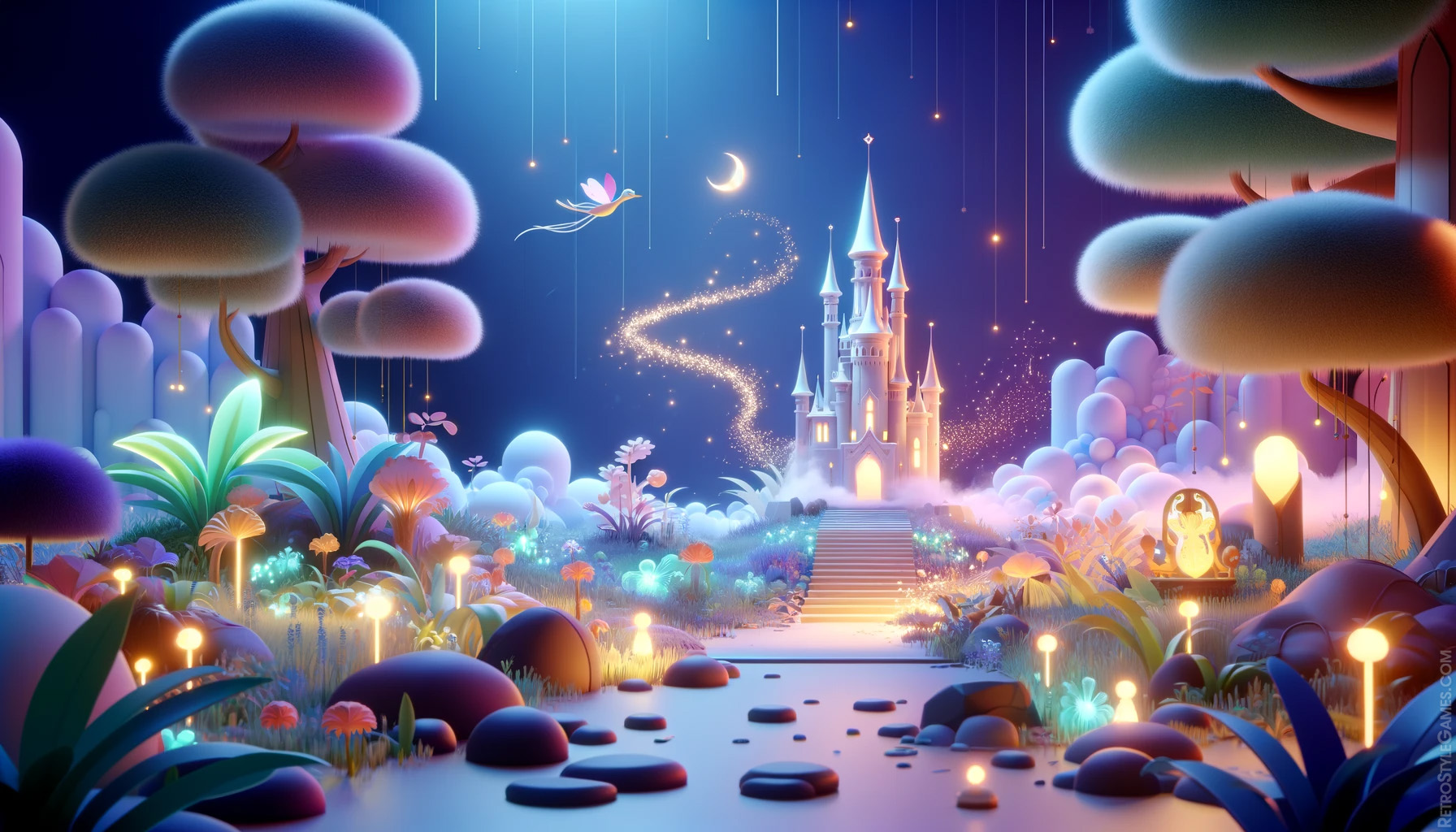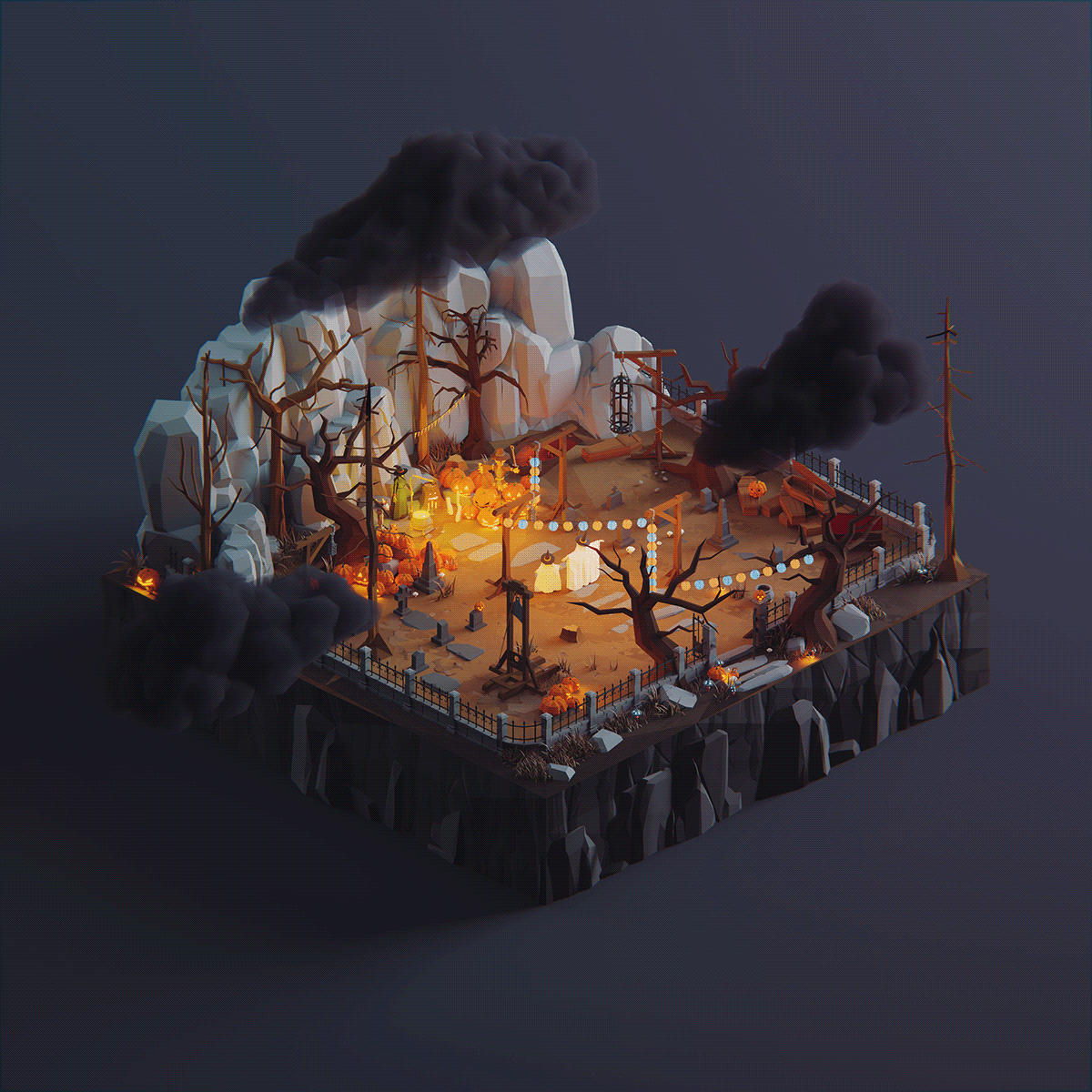
Beyond Realism: Exploring the Magic of Stylized Animated Worlds
For decades, animation was often judged by its ability to mimic reality. The closer a cartoon character resembled a human, the more "advanced" it was deemed. But as technology progressed, a different trend emerged: a deliberate departure from realism. Stylized animation, with its unique aesthetics, exaggerated proportions, and vibrant colors, has not only captured the hearts of audiences but has also redefined the art form, offering a boundless playground for creativity and storytelling.
This article delves into the enchanting realm of stylized animated worlds, examining their evolution, artistic choices, cultural impact, and the reasons behind their enduring appeal. We’ll explore how these worlds, far from being mere visual distractions, are often crucial components in conveying emotions, themes, and narratives in ways that realism simply cannot.
The Genesis of Style: A Reaction and a Revelation
The roots of stylized animation can be traced back to the early days of the medium. Even pioneers like Winsor McCay, with his groundbreaking "Little Nemo in Slumberland" (1911), embraced exaggeration and surreal imagery to transport viewers to fantastical landscapes. However, the drive towards photorealism in animation became a dominant force, particularly with Disney’s meticulous animation techniques and striving for naturalistic character movements.
But the desire for artistic freedom never truly faded. Animators like Chuck Jones, with his iconic Looney Tunes characters, embraced a more fluid and elastic style, prioritizing comedic timing and exaggerated expressions over anatomical accuracy. The rise of Japanese animation (anime) in the late 20th century further solidified the appeal of stylized visuals. Anime series like "Astro Boy" and "Speed Racer" introduced Western audiences to character designs with large, expressive eyes, dynamic action sequences, and unique visual shorthands for emotions.
This rejection of strict realism wasn’t merely a matter of artistic preference. It was also a practical choice. Stylized animation often proved to be more cost-effective and efficient than attempting to replicate the complexities of the real world. More importantly, it allowed animators to focus on what truly mattered: crafting compelling stories and memorable characters.
The Palette of Possibilities: Defining Stylized Aesthetics
Stylized animation encompasses a wide spectrum of visual approaches, each with its own distinct characteristics. Some common elements that define these styles include:
-
Exaggerated Proportions: Character designs often deviate from realistic human anatomy. Heads may be larger, limbs may be elongated, and features may be simplified or amplified. This exaggeration allows for greater expressiveness and comedic potential. Examples include the large heads and wide eyes of many anime characters, or the impossibly thin waists and powerful builds of characters in series like "The Powerpuff Girls."
-
Simplified Details: Stylized animation often strips away intricate details in favor of bold shapes, clean lines, and flat colors. This simplification doesn’t necessarily mean a lack of visual complexity. Instead, it allows the viewer to focus on the essential elements of a scene or character. Think of the iconic, minimalist designs of "Samurai Jack," where every line and color serves a specific purpose.
-
Vibrant and Symbolic Colors: Color palettes in stylized animation are often bolder and more saturated than those found in real life. Colors can be used to evoke specific emotions, highlight important details, or create a unique visual atmosphere. The contrasting colors and dynamic lighting in "Spider-Man: Into the Spider-Verse" are a prime example of how color can be used to enhance the film’s visual impact.
-
Geometric Shapes and Abstract Designs: Some stylized animation pushes the boundaries of realism even further, incorporating geometric shapes, abstract patterns, and surreal imagery into its designs. This approach can create visually stunning and thought-provoking worlds, as seen in the surreal landscapes of "Adventure Time" or the geometric character designs of "Steven Universe."
-
Influence of Art Movements: Stylized animation often draws inspiration from various art movements, such as Art Deco, Cubism, and Expressionism. These influences can be seen in the character designs, backgrounds, and overall visual aesthetic of a particular animation style. The Art Deco influences in "Batman: The Animated Series" are a clear example of how art movements can shape the look and feel of an animated world.
Beyond the Visual: The Power of Stylization in Storytelling
The appeal of stylized animation extends far beyond its visual aesthetics. It’s a powerful tool for storytelling, allowing animators to:
-
Enhance Emotional Impact: Exaggerated expressions and dynamic movements can amplify the emotional impact of a scene. A character’s joy, sadness, anger, or fear can be conveyed more effectively through stylized animation than through realistic animation. The expressive faces and body language of characters in Studio Ghibli films like "Spirited Away" are a testament to this.
-
Create Distinctive Worlds: Stylized animation allows for the creation of unique and memorable worlds that would be impossible to replicate in live-action. These worlds can be fantastical, surreal, or even satirical, reflecting the themes and messages of the story. The whimsical and imaginative world of "Rick and Morty" is a perfect example of how stylized animation can create a truly unique setting.
-
Communicate Themes and Ideas: The visual style of an animation can be used to communicate themes and ideas in a subtle and symbolic way. For example, a dark and gritty animation style might be used to convey a sense of despair or hopelessness, while a bright and colorful style might be used to convey a sense of optimism and hope. The contrasting visual styles in "Avatar: The Last Airbender" reflect the different cultures and environments within the show’s world.
-
Break the Boundaries of Reality: Stylized animation allows animators to break the boundaries of reality and explore the limitless possibilities of the imagination. Characters can defy the laws of physics, worlds can transform in an instant, and anything is possible. This freedom allows for truly creative and innovative storytelling. The surreal and dreamlike sequences in "Paprika" are a prime example of how stylized animation can push the boundaries of reality.
The Cultural Impact and Enduring Appeal
Stylized animation has had a profound impact on popular culture, influencing everything from fashion and design to music and video games. Its accessibility and visual appeal have made it a popular choice for audiences of all ages, and its ability to tell complex and meaningful stories has earned it critical acclaim.
The success of stylized animated films and TV shows like "Spider-Man: Into the Spider-Verse," "Steven Universe," "Avatar: The Last Airbender," and countless anime series has demonstrated the enduring appeal of this art form. These works have not only entertained audiences but have also challenged conventions, promoted diversity, and sparked important conversations about social issues.
The Future of Stylized Animation
As technology continues to evolve, the possibilities for stylized animation are only expanding. New software and techniques are allowing animators to create even more visually stunning and imaginative worlds. The rise of independent animation and online platforms has also given artists more freedom to experiment with different styles and tell their own stories.
From the hand-drawn charm of classic anime to the cutting-edge CGI of modern animated films, stylized animation continues to captivate and inspire. It’s a testament to the power of creativity, imagination, and the enduring human desire to escape into worlds that are both familiar and fantastical. The future of stylized animation is bright, and its influence on art, culture, and storytelling will only continue to grow. It’s a reminder that sometimes, the most powerful stories are told not by mimicking reality, but by transcending it.

